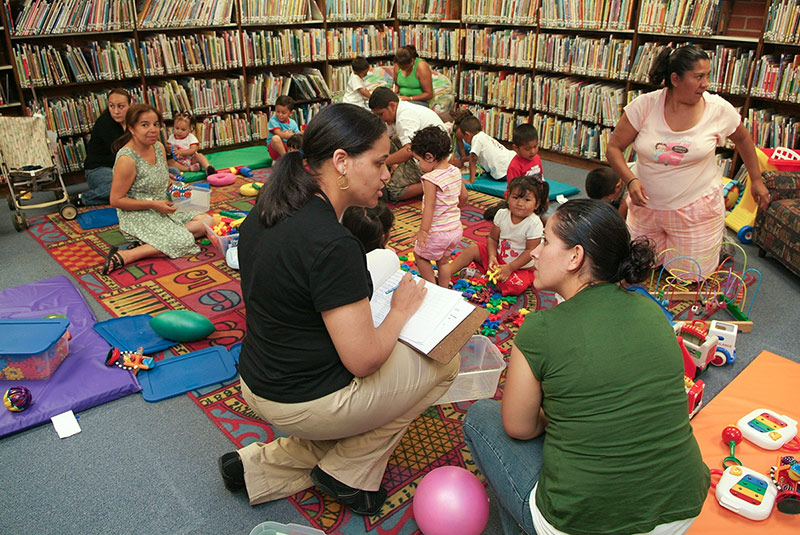Community and Library Assessment

Community Assessment
When launching Stay & Play, it is important to think about strategies to get to know the family, friend, and neighbor childcare providers in your library’s community. Use the Stay & Play FFN Needs assessments in multiple languages to assess these needs.
Another option is to conduct small informal focus groups with short interview questions or to canvas individual or small groups of caregivers about their topics of interest, as well as the languages, and scheduling that will meet their needs. Ask caregivers who they want to hear from. In one pilot library, they found that instead of representatives from public health, their patrons really wanted more “community helpers” (fire, police, etc.).
If direct assessment is not possible, you can sometimes leverage previously collected data gathered by other community organizations. Staff can look at what information your library or community partners already collect about FFN to help inform your program design.
In addition to assessing the needs of your target audience, it’s also important to determine what other agencies in your community have missions related to serving young children and families. Some could be a great match for Stay & Play at your library. Think about existing partnerships with your library as well as potential new partners in your community. Here’s a list of potential partners to consider.
Whatever method you use to assess your community needs will set the foundation for long-term, trusting relationships with partners as well as family, friend, and neighbor (FFN) caregivers, while also informing the design of your program to meet those needs.
Library Assessment
The Early Learning with Families (ELF) readiness assessment tool is one method that can help staff identify their library’s readiness to start Stay & Play as well as other early learning programs. However you choose to assess your library’s capacity, be sure to include the following:
Early Learning Perspective
Does your library embrace an early learning service perspective? Stay & Play strives to strengthen adult-child interactions while also supporting healthy development and learning in children 0-5. Consequently, staff need good communication and interpersonal skills to effectively interact with young children and their adult caregivers.
Library-Wide Support
Are the reasons for implementing Stay & Play clearly identified and embraced throughout your library, from upper management to frontline staff and volunteers? If not, what needs to be done to build this understanding and consensus? Such support is critical to enabling staff to do well and achieve their Stay & Play goals. Taking time to gather people together, explain Stay & Play, and listen to input are essential steps to successfully implementing this service model. If you don’t currently have such systemic support, think about how you can bring administration and staff together to explore the possibilities.
Staffing
Does your library have sufficient staffing? Stay & Play requires ongoing staff time — for planning, outreach, set-up, delivery, reflection, evaluation, and continuous service improvement. We recommend at least two staff members who can consistently carry out all aspects of Stay & Play, including regularly interacting with participants when offering in-person programming.
Physical space
Do you have the space to adequately host a Stay & Play program series, and if so, how will the space be configured? An important part of a successful Stay & Play is creating a space that young children and their adult caregivers find welcoming.
Play Activities/Resources
What resources will be needed? Identify the supplies such as toys, art supplies, and food that will be needed; the community experts you could introduce, if you choose to include a speaker series; the tools and online resources you plan to specifically curate for this target audience; as well as sources for funding or in-kind donations. See the Program Delivery section of this toolkit for more detailed recommendations.
